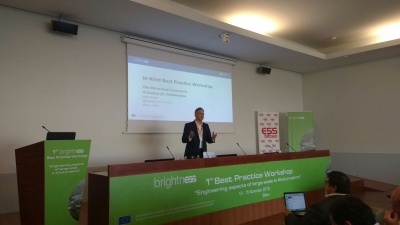The First workshop on ‘Engineering aspects of large-scale In-Kind projects’


Fisrt BrightnESS* Best Practice Workshop on engineering aspect of large-scale In-Kind projects
Supported by the European Spallation Source ERIC, Elettra Sincrotrone and ESS Bilbao
Around one hundred scientists from Europe will be coming to Bilbao to discuss the implementation of best practises in engineering protocols for large-scale science projects
Over a two-day period, ESS Bilbao will be hosting the first workshop on best practises for engineering in areas linked to large-scale science projects financed by in-kind contributions, like the European Spallation Source that is currently being built in the Swedish city of Lund.
Engineers and physicists from around the world will meet to discuss the requirements and restrictions that arise in large-scale science projects from any aspects related to engineering and the standardization of the different components. They will also be sharing their experiences in an attempt to implement best practises for documentation management systems, data exchange tools, the standardization of 3D designs and supply standardization for components required to manufacture systems and subsystems (cables, vacuum pumps, screws, connectors and others). Essentially, the aim is to achieve greater coherence in all engineering-related areas of these inherently complex projects that are financed by in-kind contributions from a number of different partners.
Engineers from world-renowned centres such as, ITER, CEA-Saclay, Elettra Sincrotrone, Max IV Lab., ISIS, Diamond Light Source, UKAEA, DESY, INFN, FAIR, CNRS, PSI will describe their experiences and share their knowledge with all of the partners who make up the European Spallation Source project.
Projects built on in-kind contributions, like the European Spallation Source ERIC, which counts on the participation of nearly 100 institutions from 15 countries members and observers, face inevitable difficulties in information management, in the adoption of standards and in the subsequent integration of all of their engineering processes. It is therefore essential, if such projects are to be undertaken successfully, that all of the action protocols are standardized throughout all of the different countries.
The European Spallation Source is a European Research Infrastructure Consortium with 15 nations committed to the goal of collectively building and operating the world’s leading facility for research using neutrons by the end of the decade. The user programme will commence in 2023.
* BrightnESS is a European Union-funded project within the European Commission’s Horizon 2020 Research and Innovation programme in support of the European Spallation Source ERIC, a partnership of several European nations working together to build the world’s next-generation neutron science facility.






